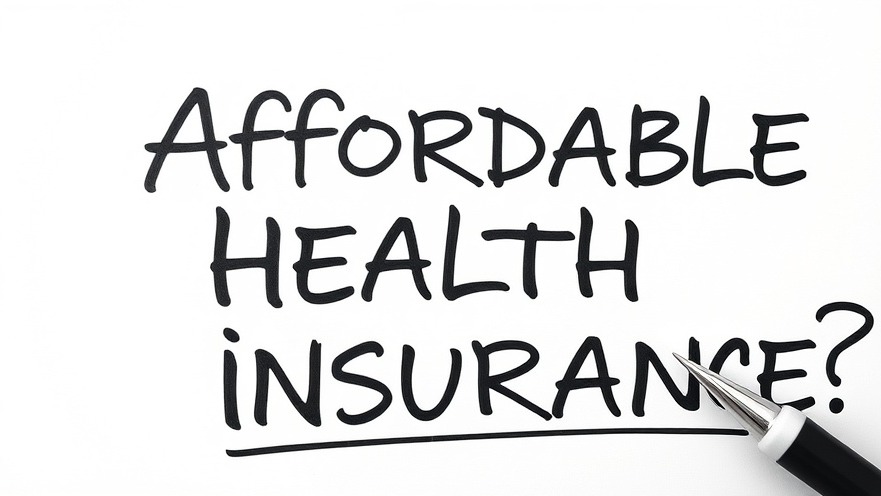
Understanding Catastrophic Plans: A Response to Rising Obamacare Costs
The Trump administration's approach to soaring premiums under the Affordable Care Act (ACA) highlights the complexities of health care reform in America. With insurance costs set to rise dramatically for millions next year, officials are advocating a shift towards plans that offer less coverage. They believe this will appeal to consumers facing financially burdensome premiums.
The Mechanics of Catastrophic Plans
Introduced as a safety net, catastrophic plans are health insurance options that come with lower monthly premiums but high deductibles. In 2026, individuals could face deductibles of more than $10,600, meaning they must cover significant costs out-of-pocket before their insurance kicks in. However, these plans do provide some benefits, including three primary care visits per year and full coverage for preventive services, such as vaccinations and screenings.
Political Dynamics and Public Concern
As legislative discussions heat up within Congress, concerns about public backlash are rising. The expiration of pandemic-era subsidies is projected to affect average premiums by about 75%. This political climate reflects the Republicans' attempts to balance party ideology against their constituents' well-being. As bipartisan lawmakers push to renew these subsidies, the Republican leadership grapples with a faction opposed to extending spending, even if it means substantial harm to voters.
Future Predictions: Implications for Consumers
Many health experts predict that without legislative action, a significant number of consumers could inadvertently find themselves without critical financial support. The =average consumer could be gravely impacted, potentially leading to a distinct class of uninsured individuals ignited by fear of high out-of-pocket expenses.
Wider Community Health Ramifications
For communities, particularly those focused on health and wellness, the introduction of high-deductible plans might influence preventative healthcare utilization. As more individuals might opt for these cheaper plans, the potential delay in seeking necessary care could increase long-term health issues, ultimately burdening local health facilities and increasing overall healthcare costs.
Insights on Navigating a Changing Healthcare Landscape
Being informed is essential during these tumultuous times. Consumers should take proactive steps to thoroughly review their health insurance options and understand the implications of high-deductible plans. Health and wellness centers, particularly in areas like San Antonio, can provide valuable resources and guidance. Engaging with community health events can also offer insights into optimal health strategies and aid navigating available healthcare options.
Conclusion
The ongoing transformation of the healthcare landscape necessitates active engagement from consumers and local leaders alike. Understanding what catastrophic plans entail is just the beginning. Individuals should stay informed about potential legislative changes and their implications, and seek community support from health and wellness resources.
Take Action: Stay Informed on Your Health Options
Stay ahead of the healthcare changes by following local health and wellness events and consulting with experts. Whether through seeking assistance at wellness centers or participating in educational sessions, consumers can empower themselves to make informed decisions regarding their health coverage.
 Add Element
Add Element  Add Row
Add Row 




Write A Comment